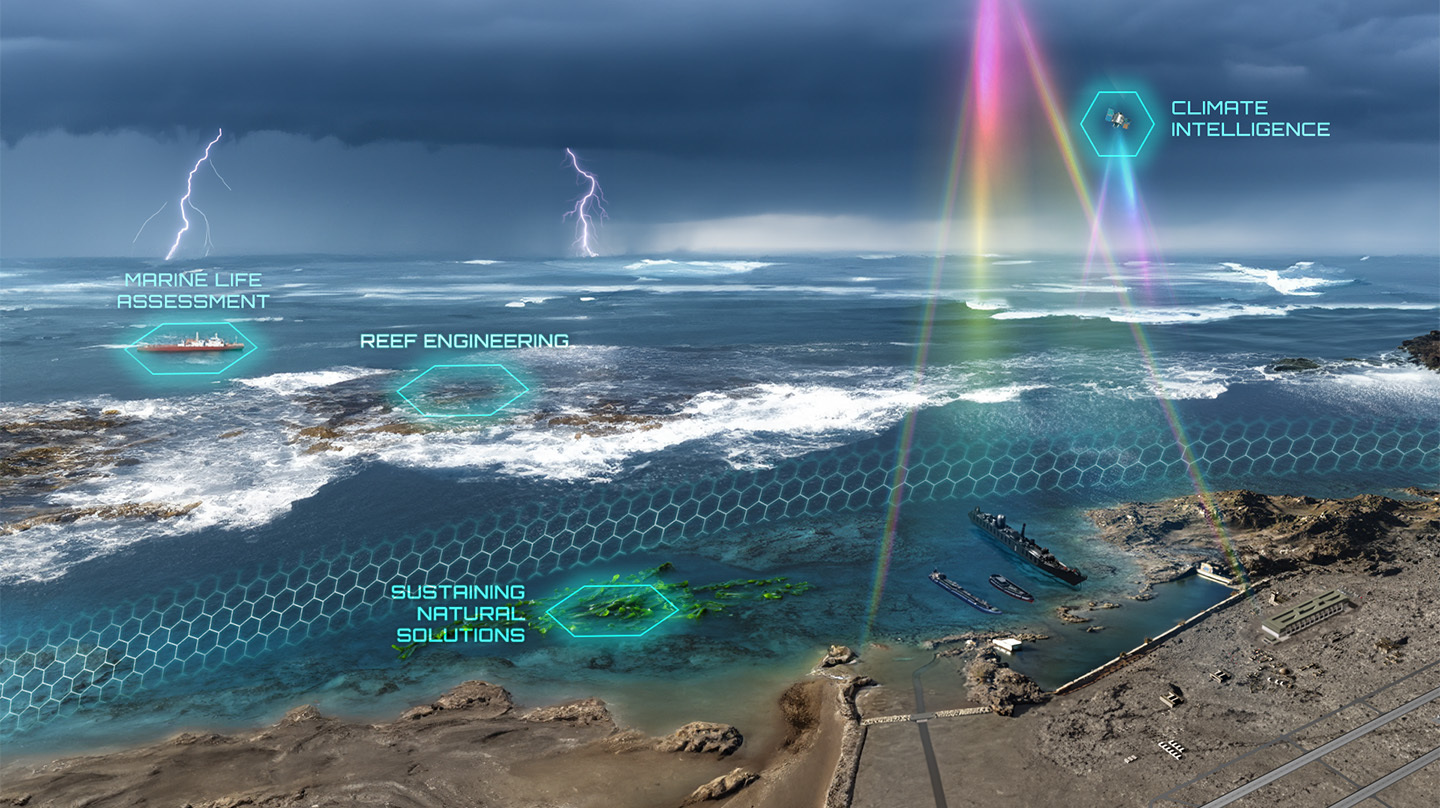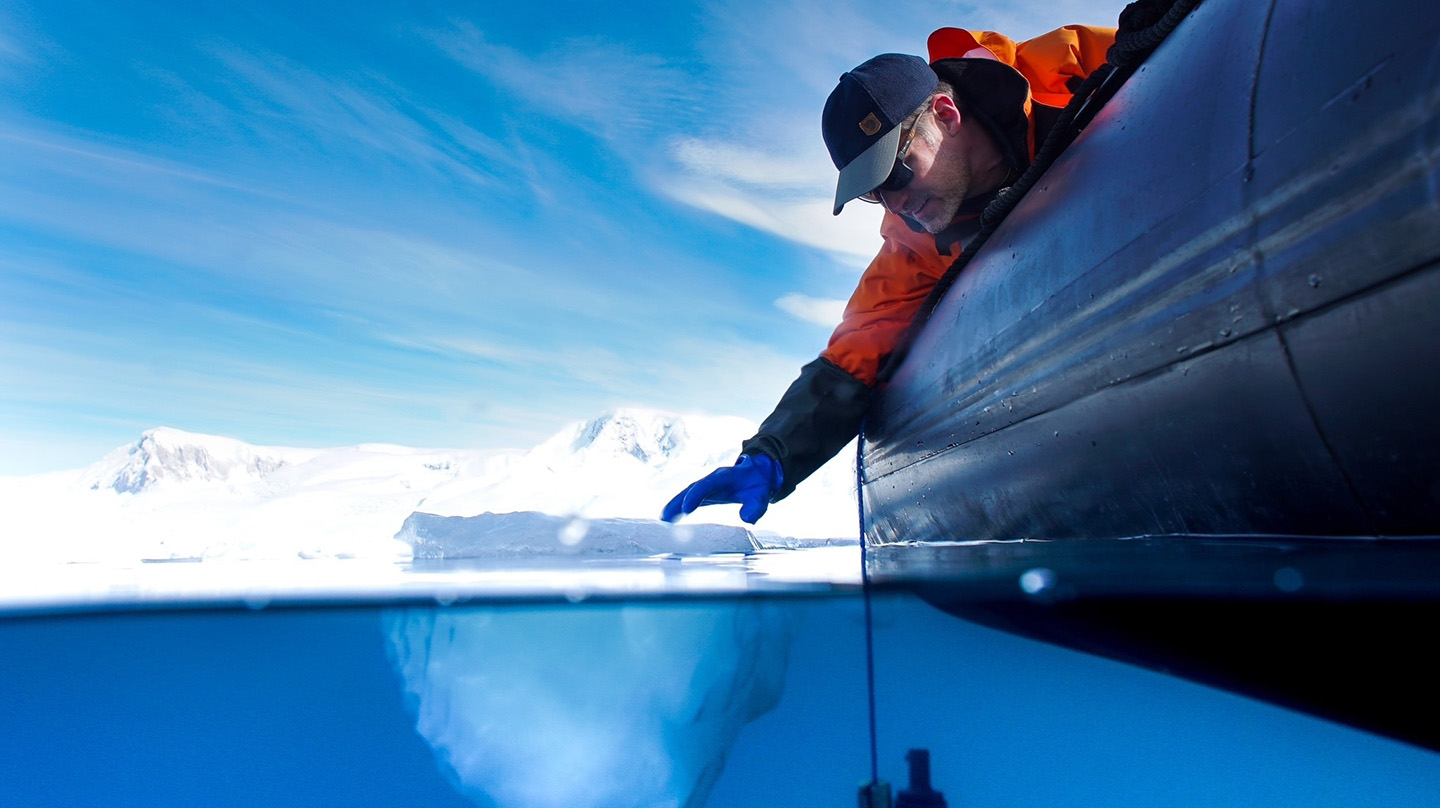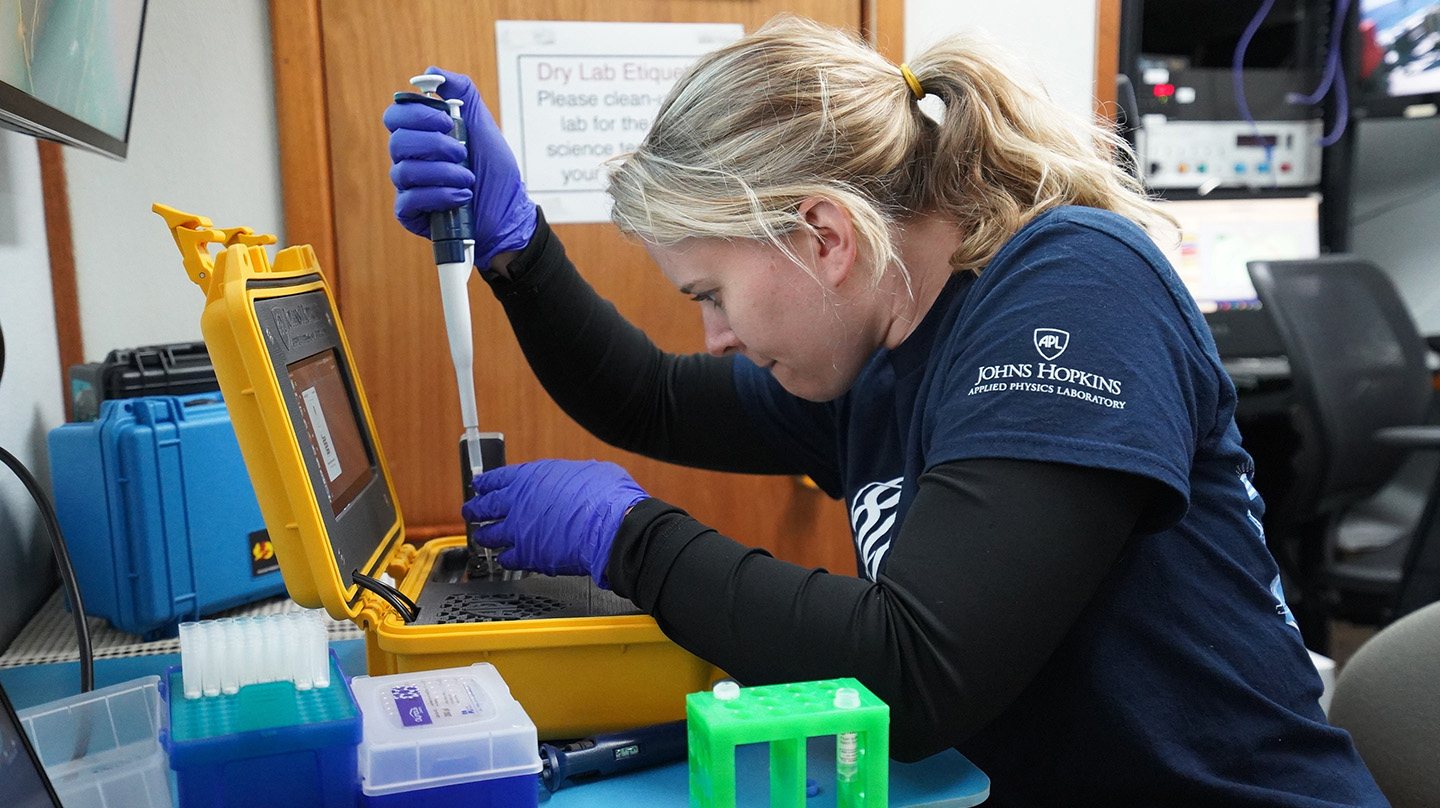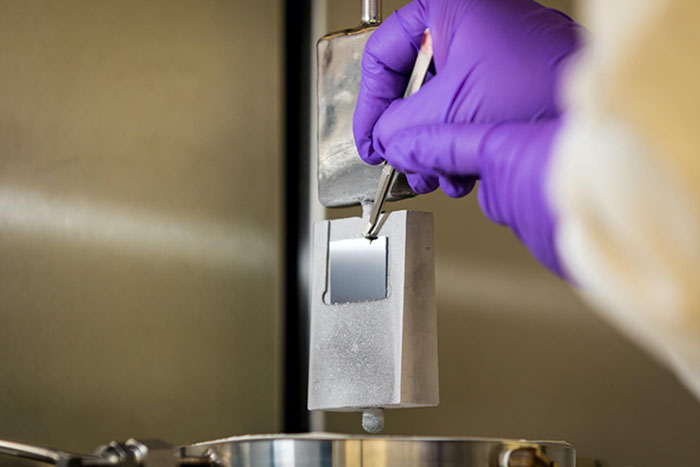Our Contribution
Our understanding of the living world is largely shaped by what we can see, hear, and touch. While satellites and radio have revolutionized our ability to monitor our surroundings, much of the living world is changing at spatial and temporal scales beyond human perception. At APL, we use genetic information to observe animals, plants, and microbes in their natural environments, treating DNA and RNA as chemical data storage media. Like many genomics labs, we use sophisticated DNA sequencing instruments and extensive computing resources to extract this information. However, our work is pushing beyond traditional paradigms to operationalize genomics research in ways that support intuitive decision-making. Building on the pathogen sequencing approaches scaled during the COVID-19 pandemic, APL developed the Basestack software platform, enabling rapid and reproducible deployment of genomics capabilities. These resources have made genomic characterization more accessible for scientists and public health workers. We are now working toward full-scale automation of laboratory processes, with the goal of enabling autonomous genomic sensing. These advances are enabling new approaches for ocean-scale biomonitoring. Moving beyond viruses, we are pioneering environmental DNA (eDNA) analysis methods to study marine ecosystems that the world relies on as the foundation of global food webs. In 2022, we established a permanent eDNA laboratory on a polar ecotourism ship, setting up a long-term observational capacity in both the Arctic and Antarctica. Subsequent expeditions in 2023 and 2024 have expanded our long-term eDNA monitoring capabilities, adding increasingly sophisticated tools and techniques with each field campaign. eDNA is genetic material shed from an organism into the environment through discarded cells or waste. When this material is collected from the ground or water, DNA analysis approaches are then used to identify what organisms have contributed to a sample, much like modern forensics tools. As eDNA analysis capabilities advance, there is a great deal of interest in leveraging this dissolved information for global biological monitoring. As we look to the future, we see opportunities for fully autonomous eDNA sensing capabilities, as well as integration with acoustic and imagery-based monitoring technologies.What Is eDNA Analysis?











